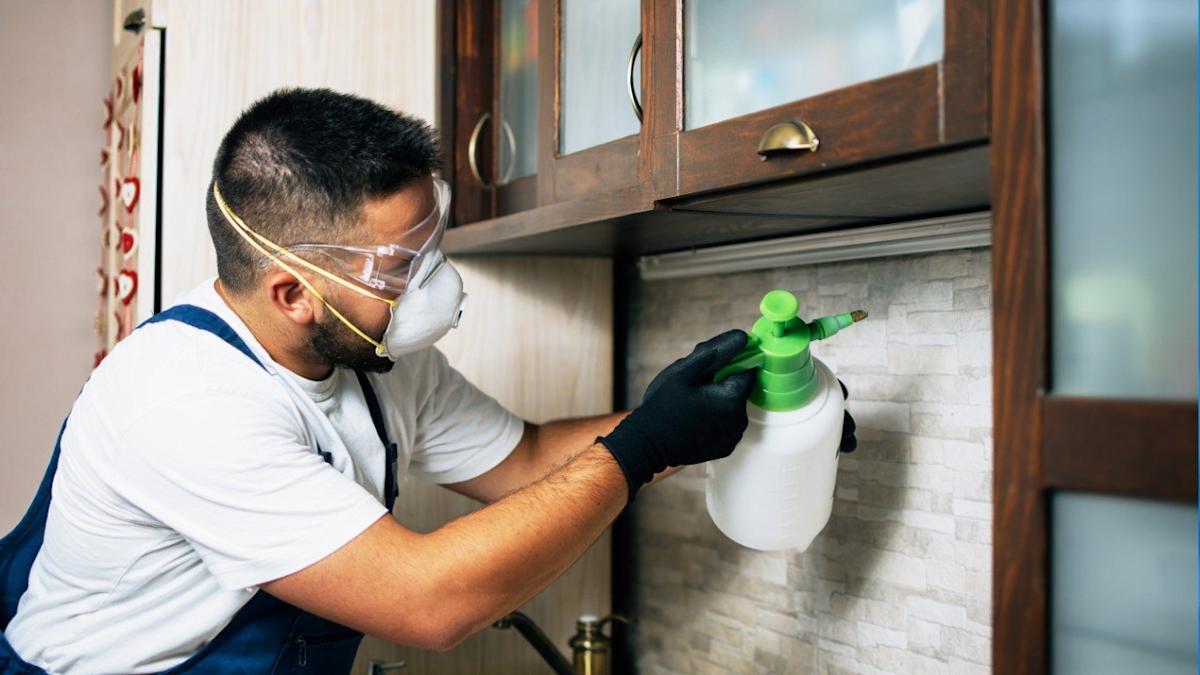
Two aggressive species of termites are now cross-breeding in South Florida, according to a recent study from the University of Florida. This is bad news for homeowners as it may mean serious damage to their homes.
Formosa termites, which have been in the area since the late 1990s, and Asian termites that made their debut in 2010 are the reason for half of the termite damage that occurs across the globe.
These two overlap in Taiwan, Hawaii, and as of late, the Sunshine State.
Advertisement
Advertisement
Regardless of whether you’re a Florida resident, you can reduce the risk of a termite infestation and keep your home (and anyone that enters it) safe.
Signs of a termite infestation
Fortunately, a termite infestation is easy to spot, especially if you know what to look for. The telltale signs include:
Mud tubes
These are probably the most common sign of termites. Made of mud and dirt, they look like thin, pencil-width tunnels.
“Termites build mud tubes so they can travel from their underground colonies into your home,” explains Jeremy Logsdon, owner of Preventive Pest Control in Houston. You’ll usually see them on foundation walls, crawl space supports, or even on the inside of walls.
Discarded wings
If you see piles of small, translucent wings that look like fish scales, especially near window sills, doors, or light sources, they’re likely shed wings from termite swarmers.
Advertisement
Advertisement
“Swarmers are reproductive termites that leave the colony to start new ones, and they drop their wings shortly after. This is a sure sign you have an active termite colony nearby,” says Logsdon.
Damaged wood
Termite-infested wood might sound hollow when tapped, or you might see blistering or darkening of wood surfaces. Sometimes, you’ll find mazelike patterns within the wood itself or even thin, crumbling pieces of wood.
“Termites eat wood from the inside out, so the damage might not be visible until it’s extensive,” explains Logsdon.
Frass
Frass is a fancy word for termite droppings. According to Logsdon, termites may leave behind small piles of wood-colored pellets, which often accumulate near baseboards, windowsills, or furniture.
Squeaky floorboards or sticky doors and windows
As termites tunnel through wood, they can compromise its structural integrity.
Advertisement
Advertisement
“This can lead to floors that squeak more than usual, or doors and windows that become difficult to open or close because the frames are warping,” said Logsdon.
How to prevent a termite infestation
Preventing termites starts with making your home less inviting to them. First and foremost, get rid of wood-to-soil contact. “I recommend making sure decks, fences, or other wooden structures don’t touch the ground. Termites need soil to survive, and direct contact is a highway into your home,” says Jason Napolski, president & CEO at A-Tex Pest Management in Austin, Texas.
It’s also important to clean gutters to avoid excess moisture near the foundation—something termites thrive on.
“If you have firewood laying around, keep the logs at least 20 feet away and elevated off the ground. Stacked wood is a buffer for termites,” explains Napolski.
Advertisement
Advertisement
Don’t forget to repair leaks immediately and check for damp areas in crawl spaces or basements. Lastly, schedule annual inspections.
“A professional termite inspection once a year can catch signs early, before the damage escalates,” said Napolski.
What to do if you find termite damage in your home
If you discover termite damage in your home, the first step is to contact a licensed pest control professional for a thorough inspection.
“Act quickly because termites can cause serious structural damage if left untreated,” explains Napolski.
A professional will be able to assess the extent of the infestation and recommend the best treatment, based on the type of termite and how far the damage has progressed.
Advertisement
Advertisement
In cases of widespread or hard-to-reach infestations, fumigation may be necessary.
“This involves sealing the entire home with a tent and releasing a fumigant gas that penetrates deep into walls, wood, and other materials to eliminate the colony at all stages of life,” said Napolski.
You’ll need to vacate the property for 24 to 72 hours during this process, and special precautions must be taken to remove food, plants, and pets beforehand. Once the fumigation is complete and the home has been properly ventilated, you’ll receive clearance to return safely.
For localized infestations, a less-invasive option like orange oil treatment may be effective. Orange oil contains d-limonene, a compound that kills termites on contact and is often used when the infestation is isolated to a specific area.
Advertisement
Advertisement
“This method doesn’t require tenting or vacating the home, making it an appealing choice when appropriate—but it’s not suitable for extensive or hidden infestations,” explains Napolski.
Termite damage becomes uninhabitable when the infestation compromises load-bearing structures such as floor joists, support beams, or the foundation itself. If walls begin to buckle, floors sag, or there are serious cracks in the ceiling or foundation, you may be facing a safety hazard.
At that point, not only is the home structurally unsafe, it may also be flagged by building inspectors or insurance companies as unfit for occupancy. Depending on the situation, you might have to move. A licensed pest control can help you determine the next best steps.
